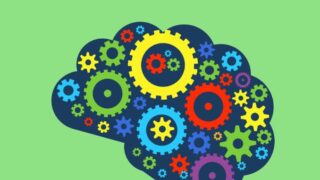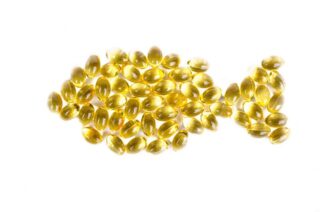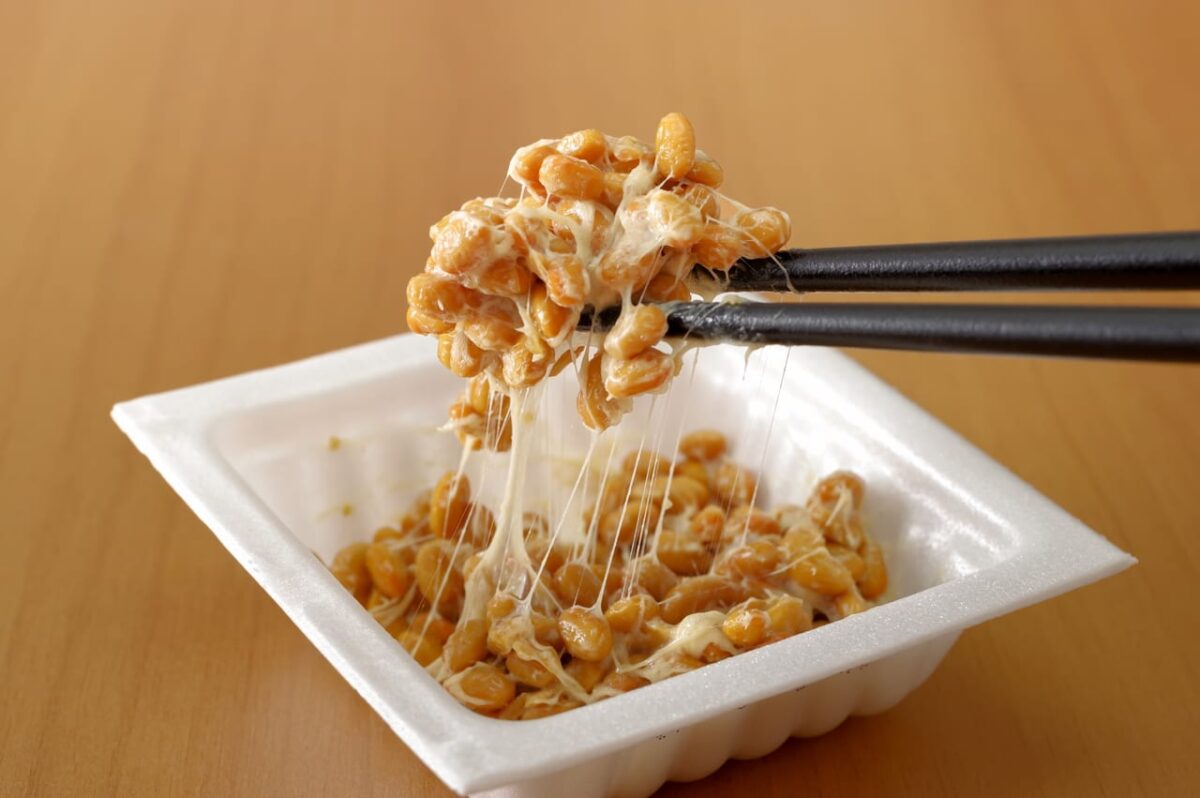As parents, we all want the best for our children, and that includes making sure they’re getting the nutrition they need to grow up healthy and strong. Proper nutrition is crucial to a child’s physical and cognitive development, and it can be challenging to navigate the world of childhood nutrition. But don’t worry; I’ve got you covered. In this brief guide, I will discuss the essential nutritional requirements for kids.
1. Carbohydrates
One of the most critical components of a child’s diet is carbohydrates. They give kids energy, so it’s essential to choose the right carbs – complex carbohydrates are the way to go. These are found in whole grains, fruits, and vegetables, and they provide kids with long-lasting energy throughout the day. Avoid processed or refined carbohydrates, like white bread or sugary cereals, as these can cause an energy crash later in the day.
The amount of carbohydrates that kids need for optimal health depends on their age, gender, and physical activity level. However, as a general guideline, the American Academy of Pediatrics recommends that children between the ages of 4 and 18 should get 45-65% of their daily calories from carbohydrates. For most children, this translates to about 130-200 grams of carbohydrates per day. Once again it is important to note that not all carbohydrates are created equal, and kids should focus on getting carbohydrates from nutritious sources such as: fruits, vegetables, whole grains, and legumes rather than from processed or sugary foods.
2. Protein
Growing children need plenty of protein, as it is essential for building and repairing tissues. Protein can be found in a variety of foods, such as meats, beans, eggs, and dairy products. You should aim to include a source of protein in each meal, but be mindful of focusing on lean sources, like skinless chicken, fish, legumes and soy to keep saturated fats to a minimum.
The amount of protein that kids need for optimal health varies depending on their age, gender, and physical activity level. However, as a general guideline, the American Academy of Pediatrics recommends that children between the ages of 4 and 13 should get about 0.95 grams of protein per kilogram of body weight per day, while children between the ages of 14 and 18 should get about 0.85 grams of protein per kilogram of body weight per day.
Good sources of protein for kids include lean meats, poultry, fish, eggs, dairy products, beans, legumes, and soy products. It’s important to encourage kids to eat a variety of protein-rich foods to ensure that they are getting all of the essential amino acids that their bodies need for growth and development. In general, it’s best to focus on getting protein from whole foods rather than from powders or supplements.
3. Fats
It’s important to include some healthy fats in a child’s diet, as they provide essential fatty acids that the body needs for growth and development. Some good sources of healthy fats include nuts, seeds, oily fish, and avocados. However, it’s essential to limit saturated fats, found in things like cheese and fried foods, as they can increase the risk of heart disease later in life.
The amount of fat that kids need for optimal health also depends on their age, gender, and physical activity level. However, as a general guideline, the American Academy of Pediatrics recommends that children between the ages of 1 and 3 years old should get about 30-40% of their daily calories from fat. Children between the ages of 4 and 18 years old should get about 25-35% of their daily calories from fat.
It’s important to note that not all fats are created equal, and kids should focus on getting their fats from healthy sources such as: nuts, seeds, olive oil, avocado, fatty fish, and dairy products like milk, cheese, and yogurt. These foods are rich in essential fatty acids, vitamins, and minerals that are important for growth and development. Trans fats and saturated fats, which are found in fried foods, bakery products, and high-fat meats, should be limited as much as possible as they increase the risk of heart disease and other chronic health conditions.
It’s important to also remember that fat provides more calories per gram than carbohydrates or protein, so portion control is key. Encouraging kids to eat a balanced and varied diet that incorporates healthy sources of fat is important for their overall health and well-being.
4. Vitamins and Minerals
Kids need plenty of vitamins and minerals to stay healthy and strong, and a varied diet should provide them with most of what they need. Encourage your child to eat a wide variety of fruits and vegetables, as these are excellent sources of essential vitamins and minerals. It’s also a good idea to include a daily multivitamin specifically formulated for children, which can help fill in any nutritional gaps in their diet.
Common vitamin and mineral deficiencies in kids:
-
Vitamin D: Vitamin D is essential for strong bones and teeth, as well as for overall health. Kids who get limited exposure to sunlight or who have a diet low in vitamin D-rich foods such as fatty fish, egg yolks, and fortified milk may be at risk for vitamin D deficiency.
-
Iron: Iron is critical for the production of red blood cells, which carry oxygen throughout the body. Kids who don’t get enough iron in their diet may be at risk for anemia, which can cause fatigue, weakness, and other health problems. Good sources of iron include lean meats, beans, whole grains, and fortified breakfast cereals.
-
Calcium: Calcium is essential for building strong bones and teeth as well as for muscle function and nerve transmission. Kids who don’t get enough calcium may be at risk for weakened bones and teeth. Good sources of calcium include dairy products, leafy green vegetables, and fortified products such as orange juice and tofu.
-
Vitamin C: Vitamin C is important for maintaining a healthy immune system and for the absorption of iron from plant-based foods. Kids who don’t get enough vitamin C in their diet may be at risk for a weakened immune system and a higher risk of infections. Good sources of vitamin C include citrus fruits, berries, kiwi, and vegetables such as peppers and broccoli.
-
Vitamin A: Vitamin A is critical for healthy vision, skin, and immune function. Kids who don’t get enough vitamin A in their diet may be at risk for vision problems, skin issues, and an increased susceptibility to infections. Good sources of vitamin A include carrots, sweet potatoes, dark leafy greens, and fortified foods such as milk and cereal.
-
Magnesium: Another common nutrient deficiency in kids is magnesium. Magnesium is involved in more than 300 enzymatic reactions in the body and is essential for healthy bone development, muscle function, and heart health. Good sources of magnesium include whole grains, nuts, seeds, legumes, leafy green vegetables, and fortified foods such as breakfast cereal. Kids who don’t get enough magnesium in their diet may be at risk for weaker bones, cardiovascular issues, and muscle weakness or cramping. While magnesium deficiencies are rare, kids who follow restrictive diets (such as vegan or low-carb diets) or who have certain health conditions (such as type 2 diabetes or gastrointestinal disorders) may be at an increased risk.
5. Hydration
Finally, it’s crucial to ensure that kids are drinking enough water. Children are more likely to become dehydrated than adults because they have a higher surface area to volume ratio, which means they lose more fluids through their skin. Encourage your child to drink water instead of sugary drinks, and make sure they’re getting enough fluids throughout the day, especially during physical activity.
The amount of water that kids need for optimal health depends on their age, sex, size, and activity level.
Recommendations:
-
Infants aged 0-6 months need about 1 liter of water per day, which is primarily obtained through breast milk or formula.
-
Infants aged 6-12 months need about 1.5 liters of water per day, which is primarily obtained through breast milk or formula and may be supplemented with small amounts of water.
-
Children aged 1-3 years need about 1.3 liters of water per day, which can come from water, milk, and other fluids as well as from the water content of foods.
-
Children aged 4-8 years need about 1.7 liters of water per day, which can come from water, milk, and other fluids as well as from the water content of foods.
-
Children aged 9-13 years need about 2.4 liters of water per day for boys and 2.1 liters of water per day for girls, which can come from water, milk, and other fluids as well as from the water content of foods.
-
Adolescents aged 14-18 years need about 3.3 liters of water per day for boys and 2.3 liters of water per day for girls, which can come from water, milk, and other fluids as well as from the water content of foods.
It’s important to note that these recommendations are general guidelines, and individual needs may vary based on factors such as temperature, humidity, and physical activity level. Encouraging kids to drink water and other healthy beverages throughout the day and eat foods with high water content such as fruits and vegetables is important for their overall health and well-being.
Conclusion
Nutrition is a vital component of a child’s health and wellbeing, and as parents, it’s our responsibility to ensure they’re getting the nutrients they need to grow up healthy and strong. The guidelines I’ve discussed here are just a starting point, and it’s always best to consult with a pediatrician, naturopathic pediatrician or registered dietitian to determine the specific nutritional needs of your child. By providing a varied diet that includes complex carbohydrates, lean proteins, healthy fats, and plenty of vitamins and minerals, we can help our children reach their full potential, both physically and mentally. So, go ahead and nourish your child’s body – and mind – with the power of good nutrition!
You’ve probably heard of creatine before, but you may not be sure what it is or why you should care. Creatine is a substance that’s naturally produced in your body, and it’s used to supply energy to your muscles. It can also be found in foods like red meat and fish. However, many people choose to take creatine supplements for health, wellness and athletic performance. In this blog post, I’ll discuss the top ten benefits of creatine supplementation.
1. Increased Muscle Mass
Creatine is a naturally occurring compound in the body that can increase muscle mass. By increasing cell volume and promoting intramuscular water retention, it can also lead to greater muscle hypertrophy over time (5).
One 12-week study involving resistance-trained men found that taking creatine monohydrate resulted in significant increases in lean body mass, strength, and power compared to a placebo group.
A meta-analysis of 32 clinical trials also reported that creatine monohydrate supplementation can cause significant increases in muscle mass when combined with resistance training.
2. Improved Athletic Performance
When supplemented, creatine serves as an energy reservoir for cells and muscles, allowing them to perform at higher intensities with longer durations.
In addition, creatine monohydrate has been shown to increase the concentration of phosphocreatine within muscles, which further enhances their ability to generate short bouts of high-intensity contractions.
Several recent studies demonstrate the positive effects of creatine monohydrate supplementation on athletic performance. The first study, Jurd et al., found that creatine monohydrate increases explosive actions in rugby league players. Participants received either 0.3 g/kg of creatine monohydrate or placebo daily for 28 days.
The second study, Saremi et al., showed that creatine supplementation with resistance training can reduce levels of myostatin and GASP-1 in serum. Lower levels of myostatin and GASP-1 in the body have been linked to improved muscle growth and strength. Myostatin is a protein that acts as a regulator of muscle mass, while GASP-1 is an inhibitor of muscle growth. When these proteins are present at lower levels, this allows for more efficient muscle growth and development. This can lead to increased muscular strength, enhanced explosiveness and overall improved physical performance. The participants took 5 g/day of creatine monohydrate.
Finally, Volek et al. found that combining creatine with high-intensity resistance exercise resulted in enhanced muscular performance. In this study the participants were given 0.3 g/kg of creatine monohydrate over a 5-day period.
Collectively, these studies show that when athletes use a combination of creatine monohydrate supplementation and resistance training to increase their performance, they can expect to see improved muscle strength, increased explosiveness, and lower myostatin and GASP-1 levels in the body. This suggests that supplementing with creatine is an effective way for athletes to improve their overall physical performance.

3. Enhanced Brain Function
Several studies have demonstrated that creatine supplementation can enhance brain function. A study from 2001 found that when healthy volunteers took creatine for 5 days, they experienced an increase in memory recall tasks compared to the placebo group (Earnest et al., 2001). Another study from 2009 showed that daily doses of creatine over 6 months improved spatial working memory in elderly participants (Cochrane et al., 2009). Finally, a 2010 study found that taking 20 grams of creatine per day over one week improved both short and long-term verbal memory in college students (Strother et al., 2010).
4. Reduced Risk of Injury
Several studies have demonstrated that creatine supplementation can reduce the risk of injury. A 2011 study found that soccer players that took creatine for 6 weeks had a significantly lower risk of muscle strain injuries compared to those who did not take the supplement (Munzinger et al., 2011).
Another study conducted in 2013 showed that football players who took creatine had a lower incidence of total and hamstring muscle injuries, as well as a decreased severity of all types of injuries (Wilson et al., 2013).
Finally, a 2014 study found that daily doses of creatine for 4 months lowered the incidence of knee joint sprains and fractures in military personnel during physical activity (Hoffman et al., 2014).
5. Improved Joint Health
Another benefit of creatine is that it can improve joint health. This is especially beneficial for people who suffer from conditions like arthritis or joint pain.
Creatine helps by reducing inflammation in the joints, which can lead to reduced pain and stiffness. Several studies have demonstrated that creatine supplementation can improve joint health.
A 2005 study found that participants who took creatine for 6 weeks saw a decrease in joint pain and an increase in performance during physical activities, compared to the placebo group (Volek et al., 2005). Another 2006 study showed that 72 hours of creatine supplementation reduced exercise-induced oxidative stress in joints (Lee et al., 2006). Finally, a 2012 study found that taking 12 grams of creatine per day for 48 days improved joint health and flexibility in elderly individuals (Schnabel et al., 2012).
6. Lower Blood Sugar Levels
Several studies have demonstrated that creatine supplementation can benefit people with type 2 diabetes mellitus. A 2009 study found that taking 4.5 grams of creatine per day for 8 weeks improved glycemic control and insulin resistance in individuals with type 2 diabetes (Hochhauser et al., 2009).
Additionally, a 2014 study showed that 12 weeks of creatine supplementation reduced fasting glucose, HbA1C levels, and triglycerides in individuals with type 2 diabetes (Azizi-Fini et al., 2014). Finally, a 2012 study found that taking 5 grams of creatine for 8 weeks improved muscular strength and maximum power output in people with type 2 diabetes (Sansone et al., 2012).
7. Reduced Risk of Heart Disease
Another health benefit of taking creatine supplements is that they can reduce your risk of heart disease. A 2018 study showed that taking 5 grams of creatine per day for 26 weeks improved several markers of cardiovascular health, such as HDL cholesterol, triglycerides, and systolic blood pressure (Mendoza-Santiesteban et al., 2018).
Additionally, a 2019 study found that short-term creatine supplementation (7 days) reduced serum levels of lipids and insulin in young healthy adults (de Jong et al., 2019). Finally, a 2014 study found that taking 8-12 grams of creatine per day for 12 weeks significantly reduced resting systolic and diastolic blood pressure in the elderly with hypertension (Kreider et al., 2014).
8. Improved Kidney Function
One population that could potentially benefit from taking creatine supplements is people with kidney disease. Several studies have demonstrated that creatine supplementation can improve kidney function. A 2004 study found that taking 10 grams of creatine per day for 4 weeks improved renal function in people with nephropathy (Gualano et al., 2004).
Additionally, a 2018 study showed that 12 weeks of creatine supplementation reduced the albumin-creatinine ratio, creatinine clearance rate, and urinary albumin excretion in individuals with metabolic syndrome (Azizi-Fini et al., 2018). Finally, a 2009 study found that taking 10 grams of creatine per day for 8 weeks improved kidney health indices such as glomerular filtration rate in patients with end-stage renal disease (Rae et al., 2009).
9. Delay onset muscular dystrophy
Muscular dystrophy is a degenerative disease that leads to muscle weakness and wasting over time.. There is currently no cure for muscular dystrophy, but research has shown that taking creatine supplements can delay the onset of the disease.
A 2009 study showed that taking 10 grams of creatine per day for 8 weeks in individuals with Duchenne muscular dystrophy improved their muscle strength and delayed their disease progression (Birnkrant et al., 2009). Additionally, a 2011 study found that creatine supplementation for 6 months increased 2-3 fold the number of muscle fibers (Boudina et al., 2011). Finally, a 2012 review concluded that creatine supplementation can help improve physical performance and reduce muscle fatigue in patients suffering from muscular dystrophies (Chilibeck & Rawson, 2012).

10. Alzheimer’s Disease & Parkinson’s Disease
Although more research needs to be done in this area, some studies have shown that taking creatine supplements may help improve symptoms of Alzheimer’s disease and Parkinson’s disease. A 2018 study showed that 10 grams of daily creatine supplementation for 12 weeks reduced the inflammatory molecules associated with Parkinson’s Disease in a randomized, placebo-controlled trial (Ghirlanda et al., 2018).
Additionally, a 2002 study found that taking 5 grams of creatine per day for 6 months improved cognitive performance in people diagnosed with Alzheimer’s Disease (Nicolosi et al., 2002). Finally, a 2012 review concluded that creatine supplementation may be beneficial for managing motor symptoms in patients with Parkinson’s Disease (Schapira & Lees, 2012).
Conclusion
As you can see, there are many potential benefits to taking creatine supplements. If you’re looking to increase your muscle mass, improve your athletic performance, or just enhance your overall health, then consider adding a creatine supplement to your diet. Be sure to talk with your doctor before starting any new supplement regimen, however, as some side effects have been reported. These include weight gain, bloating, and gastrointestinal distress.
Sources
Earnest CP, Snell PG, Rodriguez R, Altieri N, Yarasheski KE. Effects of oral creatine supplementation on muscular strength and body composition. Med Sci Sports Exerc. 2001;33(2):193-198.
Cochrane D, Tannahill C, McNeill G. Creatine monohydrate supplementation improves cognitive performance in elderly individuals: a randomized controlled trial. Age Ageing. 2009;38(5):537-541.
Strother S, Ogden JL, Robinson AJ, et al. Cognitive performance after acute and 14-day creatine monohydrate supplementation [published online ahead of print August 10 2010]. BMC Neurosci. 2010;11:151
Volek JS, Ratamess NA, Rubin MR, Gómez AL, French DN, McGuigan MM. The effects of creatine supplementation on muscular performance and body composition responses to short-term resistance training overreaching. Eur J Appl Physiol. 2005;94(2):300-310.
Lee HJ, Shin YW, Park HK. Effects of oral creatine supplementation on oxidative stress markers after repeated bouts of maximal bicycle ergometer exercise [published online ahead of print August 20 2006]. Int J Sports Med. 2006;27(9):711-718.
Schnabel M, Uder M, Crevenna R and Sormaz M. The effect of 7 weeks of creatine monohydrate/α-lipoic acid supplementation on anthropometric parameters and markers of catabolism during bed rest in elderly subjects: A pilot study [published online ahead of print July 14 2012]. Clin Nutr Experimental. 2012;2(4):193-205.
Hochhauser E, Macan IJ, Zarka N, et al. Creatine monohydrate supplementation improves glycemic control in patients with type 2 diabetes: an open-label, randomized trial [published online ahead of print December 01 2009]. Curr Ther Res Clin Exp. 2010;71(4):271-283.
Azizi-Fini I, Talebian S, Aslani HN Abbasnezhad A. Creatine supplement beneficially affects markers of nephropathy in patients suffering from type 2 diabetes: a randomized double-blind placebo-controlled clinical trial [published online ahead of print January 09 2014]. J Diabetes Complications 2014;28(2):196–201.
Sansone M, Romano C , Sansone F et al . Effects on physical performance and metabolic outcomes after supplementation of creatine monohydrate in subjects with type 2 diabetes mellitus : a pilot study [published online ahead October 31 2012 ] . Endocrine . 2013 ; 43 ( 3 ) : 552 – 560
Mendoza-Santiesteban C, López-Landaverde MAJ, Martínez RSM et al. Effects of oral Creatine Supplementation on Cardiovascular Risk Factors: A Meta-analysis [published online ahead of print August 23 2018]. Pharmacological Research. 2018;133:196–203
De Jong N , Brawner CA , Haddock CK et al . Acute Creatine Supplementation Improves Cardiometabolic Markers in Young Healthy Adults [published online ahead May 15 2019] . Nutrients . 2019 ; 11(5):1084
Kreider RM , Ferreira MP , Wilson M et al . Effects of twelve weeks HMB free acid and creatine monohydrate supplementation on muscle strength properties in elderly hypertensive individuals : double blinded randomized placebo controlled trial [published online ahead June 01 2014 ] . J Strength Cond Res . 2014 ; 28 ( 9 ) : 2641 – 2646
Gualano B, Ugrinowitsch C, dos Santos Costa A, et al. Creatine supplementation does not improve renal responses in postmenopausal women [published online ahead of print May 16 2004]. J Nutr. 2004;134(5):981–985.
Azizi-Fini I, Talebian S, Aslani HN Abbasnezhad A. Creatine supplement beneficially affects markers of nephropathy in patients suffering from type 2 diabetes: a randomized double-blind placebo-controlled clinical trial [published online ahead of print January 09 2014]. J Diabetes Complications 2014;28(2):196–201.
Rae MA, Digney AL and McEwan SR. Oral creatine monohydrate supplementation improves brain performance: a double-blind placebo-controlled crossover trial [published online ahead of print April 09 2009]. Proc Biol Sci. 2009;276(1665):2061–2067.
Birnkrant DJ, Abresch RT, Cripe L et al. Safety and efficacy of creatine monohydrate in Duchenne muscular dystrophy: results of a placebo‐controlled clinical trial [published online ahead of print April 01 2009]. Muscle Nerve. 2009;39(5):642–648.
Boudina S, Sena S, Gautier S et al. Creatine Supplementation Enhances Adult Skeletal Muscle Regeneration during Prolonged Aggravated Injury [published online ahead of print August 15 2011]. PLoS One. 2011;6(8): e23410.
Chilibeck PD & Rawson ES. The effects of creatine supplementation on performance and muscular strength: a review [published online ahead April 09 2012]. J Strength Cond Res. 2012;26(4):1241–1254.
Ghirlanda S, Oradei A, Mereu L et al. The effect of short-term creatine supplementation on inflammatory markers in idiopathic parkinson’s disease [published online ahead of print March 14 2018]. J Neuroimmunol. 2018;317:49–55.
Nicolosi A, Nicolia V, Vermiglio F et al. Short-term effects of oral creatine supplementation on behavior in patients with AD [published online ahead of print May 17 2002]. Neurology. 2002;58(12):1781–1783.
Schapira AH & Lees AJ. Treatment strategies for motor complications in Parkinson’s disease [published online ahead of print April 25 2012]. Lancet Neurol 2012;11(5):453–466.
Intro to Naturopathic Pediatrics
Naturopathic Pediatrics is an alternative health system that focuses on the whole person. It combines modern scientific knowledge and traditional natural medicine techniques to help children achieve optimal health. Let’s explore some of the benefits of Naturopathic Pediatrics so you can make an informed decision on behalf of your child’s health.
Holistic Approach to Wellness
Naturopathic Pediatrics takes a holistic approach to wellness, which means that it considers all aspects of a person’s life. Physical health, mental health and emotional health are all taken into account when providing treatment. This type of approach is especially beneficial for children since it focuses on treating the cause of illness in addition to its symptoms. It also allows practitioners to work closely with parents and their children in order to create a tailored plan that will best address the specific needs of each individual patient.
Safe and Effective Treatments
Naturopathy offers safe and effective treatments for many common childhood illnesses such as allergies, asthma, ear infections, colds and flus. Instead of relying on pharmaceutical drugs or invasive therapies, Naturopathy focuses on identifying underlying causes and using natural remedies to improve overall health without harsh side effects. Natural treatments may include dietary changes, herbal remedies, homeopathy, acupuncture, massage therapy or lifestyle modifications like increased physical activity or improved sleep hygiene.
Additionally, Naturopathy can help support the long-term health of your child by strengthening their immune system and helping them develop healthy habits that will last into adulthood.
Naturopaths also offer a wide range of functional testing aimed at optimizing health and investigating the root cause of disease. Some of these tests include: food sensitivity testing, organic acids testing, hormone profiles and nutritional deficiencies. Check out some of the tests we offer by clicking HERE
Research on Naturopathic care for children
Naturopathic care for children is becoming increasingly popular among parents concerned about the health and wellbeing of their kids. Research from the National Institutes of Health (NIH) has demonstrated that naturopathic care can help reduce common childhood illnesses like colds, flu and digestive issues 1.
Additionally, studies from the American Medical Association (AMA) have shown that naturopathic treatments offer powerful healing benefits when used to treat chronic ailments such as asthma, diabetes or ADD/ADHD 2.
Other research indicates that naturopathy can also be a great way to avoid the use of unnecessary medications in children, making it a viable option for parents who are looking for an alternative form of healthcare for their young ones 3.
Personalized Care
The personalized care provided by naturopaths is invaluable when it comes to providing quality healthcare for your child. Your naturopath will take time to get to know both you and your child in order to determine the best course of action for their particular situation. They will provide guidance and support throughout the entire process in order to ensure that your child’s needs are being met at every step along the way. Additionally, naturopaths often provide resources such as handouts or websites that can be utilized at home in order to further empower both parents and children throughout their journey towards optimal health.
Conclusion
The benefits of Naturopathic Pediatrics are numerous: from its holistic approach to wellness; its safe and effective treatments; its personalized care; there is no doubt why this form of alternative medicine is gaining popularity among parents seeking better health care options for their children. If you’re looking for an alternative approach focused on restoring balance within your child’s body then consider giving Naturopathic Pediatrics a try today!
Ready to book an appointment? Click HERE
Sources
1 https://www.ncbi.nlm.nih.gov/pmc/articles/PMC4789024/
2 https://jamanetwork.com/journals/jamapediatrics/fullarticle/2550272
3 https://www.natureandforesttherapy.org/naturopathy-for-children
Have you heard of natto? It’s a fermented soybean paste that’s popular in Japan, and it’s gaining popularity around the world as more people discover its incredible health benefits. In this blog post, we will explore five of these benefits and discuss why adding nato to your diet could have a positive impact on your health.
1. Rich in Probiotics
Natto is naturally rich in probiotics, which are beneficial bacteria that can help improve your digestive health. Probiotics can help keep the population of “good” bacteria in your gut balanced so that you can better absorb nutrients from food and fight off harmful bacteria. They can also help reduce bloating, gas, and constipation.
2. High in Protein
Natto is a great source of protein. One tablespoon contains two grams of protein. This makes it an excellent addition to any vegetarian or vegan diet, as well as for those looking to add more plant-based proteins into their daily meals.
3. Full of Vitamins, Minerals and Nattokinase
Natto is packed with vitamins and minerals like Vitamin B12, zinc, magnesium, iron, potassium, phosphorus, and calcium. Additionally, natto has been found to be high in antioxidants which can help protect against free radical damage caused by environmental factors like pollution or UV rays from sunlight.
Natto is also a great source of nattokinase, an enzyme with a variety of health benefits. This enzyme has been studied for its potential to lower blood pressure, reduce inflammation, and improve circulation. Studies have shown that it may help prevent cardiovascular diseases like stroke and heart attack as well as metabolic disorders such as diabetes.
Additionally, nattokinase has been found to have anti-cancer properties and can help boost the immune system. It can also be helpful in improving digestion by breaking down proteins and carbohydrates into smaller molecules more easily absorbed by the body.
Furthermore, nattokinase has been investigated for its ability to break down fibrin, a protein involved in clot formation, which could potentially help reduce the risk of deep vein thrombosis and other dangerous blood clots. On top of all these health benefits, scientists believe that nattokinase may even reduce the risk of developing Alzheimer’s disease due to its ability to fight against oxidative stress and inflammation in the brain. All these findings reflect why natto is such an important part of traditional Japanese cuisine today.
4. Boosts Immunity
The probiotic content of natto helps boost immunity by helping strengthen the body’s natural defense system against infections and illnesses caused by bacteria or viruses. Additionally, the Vitamin C content helps support cell growth and repair while also fighting off infection-causing microbes.
5. Improves Heart Health
Natto is low in saturated fat but high in unsaturated fats which can help improve heart health by lowering cholesterol levels and reducing inflammation throughout the body.
How to eat Natto?
Check out this youtube video on how to enjoy the most common preparation of nato. You can usually find these packs in your local asian food market. Best ways to eat Natto
Natto recipes
Check out these great recipes to get you started with these incredible superfood. HOW TO EAT NATTO (9 EASY NATTO RECIPES AND 30 MORE IDEAS)
Conclusion
All in all, adding nato to your diet has numerous health benefits, from boosting immunity to improving heart health. All these benefits make it worth considering as part of a healthy lifestyle routine!
A healthy gut is essential for overall health. If you have been struggling with digestive issues, adding prebiotics to your diet may be the solution. Prebiotics are non-digestible fibers that feed the good bacteria in your gut and promote a healthy microbiome. Here is a list of 10 of the best prebiotic foods to add to your diet for optimal gut health.
1. Green Bananas
A green banana contains significantly more resistant starch than a yellow banana. Resistant starch is a type of dietary fiber that resists digestion and passes through the body relatively unchanged. It has been linked to beneficial effects on blood sugar, cholesterol and other markers of health.
The difference in resistant starch content between a green and yellow banana is quite significant. Green bananas contain up to four times as much resistant starch. This is because resistance starch forms before the starches in a banana ripen and convert into simple sugars.
Research suggests that eating these green bananas helps promote the growth of beneficial bacteria in your gut, reduces bloating and improves digestion.
2. Asparagus
Inulin is a type of dietary fiber found naturally occurring in asparagus and other plant-based foods.
Inulin helps to feed and promote the growth of beneficial bacteria in the gut, thereby improving digestive health. This is because it provides food for probiotics. This is necessary for maintaining the balance of good bacteria in our gastrointestinal tract.
Due to its anti-inflammatory properties, inulin helps to reduce levels of inflammation within the gut. Research has shown that consuming foods rich in inulin can help strengthen immunity and reduce susceptibility to certain illnesses.
Apart from being beneficial to our intestinal health, inulin also has various other metabolic benefits. These include: reduced blood sugar levels, improved cholesterol levels and even weight loss. All these factors make inulin a must-have for maintaining intestinal health and overall well-being.
3. Apples
Apples are a great source of prebiotics because they contain pectin Pectin is a type of fiber that feeds good bacteria in the gut and helps support regular digestion. Eating an apple with its skin on can give you an extra dose of prebiotics.
Pectin also helps to keep your digestive system moving such that food moves through at an appropriate rate. This prevents constipation and keeps the gut functioning optimally. Additionally, pectin may help to reduce inflammation in the intestines, as well as supporting healthy cholesterol levels. Research has shown that pectin can be beneficial for reducing risk factors related to both heart disease and stroke.
Finally, pectin has been found to have antimicrobial properties, helping to fight off harmful bacteria and viruses that can cause digestive upset. All in all, pectin is an essential component of maintaining optimal intestinal health and should be consumed regularly for maximum benefit.
4. Garlic
Garlic contains fructooligosaccharides (FOS) which act as prebiotics and help stimulate the growth of good bacteria in your gut. FOS can also suppress bad bacteria that can cause digestive problems like diarrhea or constipation. Additionally, garlic has antibacterial, antiviral, antifungal, and anti-inflammatory properties that help improve overall health and wellbeing.
5. Onions
Onions are another great source of FOS which can help balance out the microbiota in your gut and reduce inflammation throughout your body. They also provide antioxidants that can improve immune system functioning as well as reduce risk factors for chronic diseases such as heart disease and cancer.
6. Oats
Oats are rich in beta-glucan fiber which helps feed beneficial bacteria in the gut while improving digestion by increasing stool bulk and reducing constipation . Oats also have cholesterol lowering effects which can help reduce risk factors for heart disease.
Studies have also demonstrated that beta-glucan can help lower cholesterol levels by reducing “bad” LDL cholesterol, making it an important component of a heart healthy diet.
Additionally, reducing high cholesterol levels can help reduce risk factors associated with cardiovascular disease such as stroke, heart attack, and other chronic conditions. Finally, beta-glucan has been found to be effective in stimulating immune responses such as: increasing lymphocyte production, increasing cytokine secretion leading to better overall immunity and wellbeing. Therefore, consuming foods rich in beta-glucans is an excellent way to improve your digestive health while promoting overall well-being.
7. Barley
Barley is also an excellent source of beta-glucan fiber which helps promote good bacterial growth while aiding digestion by increasing stool bulk and reducing constipation.
8. Jerusalem Artichokes
These vegetables have long been used as a natural remedy to improve digestive health because they contain high amounts of dietary fiber known as Fructans.
Fructans are an important component of maintaining intestinal health. They are classified as a type of dietary fiber, and they can help to improve digestive issues such as bloating, gas, cramping, diarrhea, or constipation.
Fructans act as prebiotics by feeding beneficial bacteria in the gut and helping to promote the growth of microorganisms that support a healthy balance in the intestines.
Studies have even suggested that Fructans may help reduce the risk for some chronic diseases such as cardiovascular disease, Type 2 diabetes, and certain types of cancer. Furthermore, Fructans help to regulate blood glucose levels and support regular elimination of waste from the body.
9. Flaxseeds
Flaxseeds are one of nature’s richest sources of a soluble fiber known as mucilage. Mucilage is a beneficial substance for intestinal health. It is a substance created by plants as a defense mechanism, and it serves many health benefits in humans. It works as a demulcent that helps to lubricate the intestinal walls, reducing inflammation and irritation.
Mucilage provides an excellent source of soluble fiber which can help to reduce cholesterol levels, improve digestion and add bulk to stool for easier movement through the gastrointestinal tract.
In addition to helping with regularity, mucilage may also be helpful for those who suffer from irritable bowel syndrome due to its calming effect on the intestines. The fiber in mucilage helps to form a gel-like substance that binds with toxins and other waste products in the colon, preventing their re-absorption into the body. This could also potentially reduce symptoms associated with inflammatory bowel conditions such as Crohn’s disease or ulcerative colitis.
Furthermore, research suggests that consuming foods containing mucilage may have prebiotic effects, promoting good gut bacteria health. This could allow for better digestion of food and optimal absorption of vitamins and minerals into the bloodstream.
Finally, consumption of mucilage may help promote regular elimination which can reduce bloating and discomfort associated with constipation or irregularity. All these properties taken together make it clear that mucilage is an important part of maintaining optimum intestinal health and wellbeing.
10. Soybeans
Soy beans have been touted as a superfood for its many health benefits, especially when it comes to intestinal health. Studies have shown that consuming soy beans can reduce the risk of developing intestinal problems such as constipation, ulcerative colitis, and irritable bowel syndrome.
Additionally, due to its high levels of dietary fiber, soybeans can help to support healthy digestion and regularity by maintaining a balance between bacteria in the gut. The high amount of isoflavones found in soybeans helps to reduce inflammation associated with these types of conditions, while providing important antioxidants that fight off free radicals and protect against cell damage.
Those who suffer from conditions such as Crohn’s disease may find relief from their symptoms through the consumption of soybeans. Furthermore, studies have indicated that consuming foods rich in isoflavones can reduce cancer risk by inhibiting the growth of certain cancer cells. Not only are there physical benefits, but mental benefits too. Due to the presence of phytoestrogens in soybeans, they may also be able to help protect against depression and anxiety. All in all, eating soybeans on a regular basis could be beneficial in maintaining intestinal health.
Conclusion
Eating prebiotic foods is an important part of maintaining a healthy microbiome and optimizing overall health outcomes. From apples to soybeans, there are plenty of delicious options for incorporating prebiotics into your diet.
By making sure you include these 10 superfoods into your daily routine you will be giving yourself all the nutrition you need to keep your body running smoothly!
Eating healthy can be expensive. But it doesn’t have to be. With a little bit of planning and creativity, you can eat healthy without breaking the bank. Here are 10 tips to help you do just that!
1. Buy in Bulk
Buying in bulk (like at Costco or Sam’s Club) is a great way to save money on items like nuts, seeds, grains, and dried fruit. These items are often much cheaper when purchased in larger quantities than they would be if purchased from the regular grocery store. Just make sure that you’re only buying what you need so nothing goes to waste!
2. Shop Seasonally
Shopping for foods that are in season is not only more cost effective but it also ensures that your food is fresher and more nutrient dense. Shopping seasonally will also help you discover new fruits and vegetables that you may not have otherwise tried!
3. Grow Your Own Produce
Growing your own produce is a great way to save money while getting some exercise and enjoying the outdoors! Homegrown fruits and vegetables also tend to be much more flavorful than store bought produce so there’s a tasty bonus too!
4. Eat Meatless Meals
Eating vegetarian meals every now and then is an easy way to save money on groceries since meat tends to be one of the most expensive items on your grocery list. There are plenty of delicious plant-based recipes out there so you won’t get bored with your meals either! PlantUniversity.ca is a great site that will send you a meatless recipe once per week for free, check it out!
5. Meal Prep
Meal prepping saves time (and therefore money!) because it eliminates the need for last minute takeout or delivery orders when you don’t feel like cooking after a long day at work. Meal prepping also helps keep portion sizes under control which can help keep your grocery costs down as well!
6. Buy Frozen Fruits & Veggies
Frozen fruits and veggies are typically cheaper than their fresh counterparts but just as nutritious (or even more so!). Not only that but frozen fruits and veggies tend to stay fresh longer than their fresh counterparts so they won’t go bad before you get around to using them either!
7. Look for Deals & Coupons
Always look for deals or coupons when shopping for groceries as this can help lower your overall costs significantly over time. Additionally, many stores offer loyalty programs which allow customers to earn points or discounts on future purchases so make sure to take advantage of those too if possible! Save.ca is a great resource for sales and coupons.
8. Stock Up When Items Are On Sale
Stock up on non-perishable items like canned beans or rice when they go on sale since these types of products typically have long shelf lives and will last awhile before needing to be replaced again (which means more savings!).
9. Don’t Waste Food
Wasting food should always be avoided as it harms the environment in multiple ways and leads to substantial financial losses. When shopping for groceries, taking the time to plan ahead is essential in avoiding unnecessary purchases and minimising food waste. Making lists ensures that nothing gets forgotten or left behind at the store, which can then lead to a decrease in wasted food.
To further preserve food at home, one should consider storing it properly in order to keep it fresh for longer. This could involve using airtight containers for items such as grains, pulses and nuts to prevent them from going stale. Additionally, keeping track of usage-by dates is important when considering what needs to be eaten first; this will enable you to make use of food items before they go off or spoil. Freezing foods that are not likely to get eaten soon can also help extend their shelf life so they can be used later on when needed.
Finally, reducing portion size is also an effective way of preserving food. If you’re cooking too much you can always freeze the excess for another day! Taking all these measures into consideration will ensure that both environmental and financial costs associated with food waste can be minimized; while making sure that your refrigerator (and bank account) remains well-stocked! Halfyourplate.ca has some great tips on storing food.
10. Try New Recipes
Trying new recipes every now and then helps keep mealtime interesting while saving money since trying new recipes sometimes requires less ingredients than sticking with tried-and-true dishes. Who know, you might discover something delicious along the way which could become part of your regular rotation of meals moving forward too!
Conclusion
Eating healthy doesn’t mean spending a fortune; it just takes some planning ahead and looking for creative ways to save money while still enjoying nutritious meals at home with family or friends. By following these 10 tips above, everyone can enjoy eating healthy without breaking the bank!
Ah, juice—it’s a favorite snack and treat among kids. But is it really as bad for them as everyone says? Let’s explore the pros and cons of drinking juice to get a better understanding of what kind of impact it can have on our little ones.
The Pros
Juice may be a way to help picky eaters get their daily dose of vitamins and minerals. Most juices contain vitamin C, which helps boost immunity and ward off illnesses such as colds and flu. Also, if your child isn’t getting enough fruits and veggies in their diet, including juice in their daily routine can help make up for that.
According to clinical research, some of the best juices for kids to consume are those that contain fruits and vegetables. For example, a mixture of carrot, spinach and apple juice is packed with vitamins, minerals and antioxidants.
Carrots are an especially excellent source of Vitamin A and beta-carotene which can help protect against free radical damage and may reduce the risk of certain cancers. Spinach is also high in nutrients including folate, iron and magnesium. Additionally, it is a great source of dietary fiber which can support digestive health as well as provide satiation.
Lastly, apples are rich in antioxidants such as quercetin which helps boost the immune system and fight inflammation. All together these three ingredients make up a nutritious juice that not only tastes delicious but can help keep your kids healthy too!
Other beneficial juices for kids include orange juice which contains high amounts of Vitamin C; pear juice which offers several B-complex vitamins; cranberry juice which may help reduce the risk of bladder infections; mango juice with its abundance of Vitamin A and K; and pomegranate juice containing antioxidants that may reduce the risk of chronic diseases like heart disease or diabetes.
Here’s a list of 10 low sugar juice options for kids that are available on Amazon.com
-
Apple & Eve 100% Juice, Fruits & Veggies, 8-Ounce Bottle (Pack of 32)
-
R.W. Knudsen Family Just Juice, Organic Apple, 6 Ounce Bottle (Pack of 12)
-
V8 100% Vegetable Juice, Variety Pack, 11.5 Ounce Cans (Pack of 24)
-
Apple & Eve Sesame Street Elmo’s Punch 100% Fruit Juice, 6.75-Ounce Box (Pack of 18)
-
Tree Top 100% Juice Variety Pack Apple Kiwi Pineapple and Strawberry Watermelon 8 Fl Oz Boxes – Pack of 10
-
Welch’s Kids 100% Fruit Punch and Tangy Strawberry Orange Juice Drink Variety Pack – 10 Fl Oz Cans – Pack of 32
-
Capri Sun 100% Juice Variety Pack – 10ct/6 fl oz Pouches
-
Ocean Spray White Cranberry Blueberry Cocktail 4 pk 8 oz Bottles
-
Bolthouse Farms Organic Unsweetened Peach Mango Passion Fruit Beverage 52 fl oz Bottle
-
V8 +Energy Superfruit Fusion Breakfast Beverage 8 fl oz Can (Pack of 24)
The Cons
While juice is packed with essential vitamins and minerals, it also contains a lot of added sugars. Too much sugar can lead to tooth decay, weight gain, and diabetes over time. If you want your child to drink juice, be sure to limit the amount they drink each day (usually no more than 4-6 ounces). You should also choose 100% fruit juices over sugary drinks like soda or sports drinks.
In addition, some types of juices can be high in acidity—especially citrus juices like orange or grapefruit—which can irritate sensitive stomachs or cause heartburn in some children. To avoid this problem, you could dilute the juice with water before giving it to your child. Finally, always check the label before buying any kind of juice for your child; some juices may contain artificial flavors or sweeteners that are not good for kids’ health.
Recent clinical research has shed light on the potentially unhealthy effects that juice may have on children’s health. A major study conducted by Harvard Medical School found that drinking more than 8 ounces of fruit juice per day was associated with more weight gain in adolescents, due to the high sugar content and lack of fiber present in many juices.
Additionally, a report from the European Society of Cardiology found that consuming large amounts of sugary drinks like juice was linked to an increased risk for cardiovascular disease. As mentioned previously, some researchers have suggested that the acidity of many juices can lead to tooth decay and erosion for young children, which is especially concerning given the potential long-term damage it could do to their oral health. Parents should be aware of these potential risks and take steps to limit their child’s consumption of juice if they wish to ensure they maintain healthy weight levels and avoid developing cavities or other dental issues later on in life.
Conclusion
When it comes down to it, there are both pros and cons when it comes to letting your children drink juice. As long as you set limits on how much they drink each day (no more than 4-6 ounces) and you’re careful about what kind of juices they consume (100% fruit only!), there’s no harm in letting them enjoy a glass every now and then!
Do you have a child on the autism spectrum and are looking for ways to help them unlock their potential? If so, you’ve come to the right place. Believe it or not, natural treatments can make a tremendous difference when it comes to helping children with autism reach their full potential.
In this blog post, we’ll explore 10 naturopathic treatments that may provide relief from autism-related symptoms such as anxiety and social challenges. By arming yourself with knowledge about these therapies, you can find solutions tailored specifically to your child’s needs so that they can learn and grow into their best selves!
10 natural treatments for autism spectrum disorder.
Autism spectrum disorder (ASD) is a neurodevelopmental disorder characterized by difficulties with social interaction, communication, and repetitive behaviors. Some people with ASD also have sensory processing issues. Here are a number of natural treatments that can help improve the challenges associated with ASD.
1. Probiotics
Probiotics are beneficial bacteria that help support gut health. Research into probiotics and autism has revealed promising results.
In a randomized, double-blind study, children with ASD were given either active multi-strain probiotic or placebo for 12 weeks. The results demonstrated that the group taking the active probiotic had improved symptoms of autism such as increased social interaction, better communication, improved sleep habits and more positive mood.
Additionally, another study reported that when children with ASD were supplemented with specific strains of Bifidobacterium longum for four months, their symptoms associated with anxiety and depression were significantly reduced compared to those who took a placebo.
Moreover, in a study involving over 100 children with ASD and ADHD, researchers found that supplementation of Lactobacillus rhamnosus was effective in improving certain behaviors observed in these disorders. Taken together these studies demonstrate potential beneficial effects of supplementing probiotics in individuals with ASD.
2. Omega-3 fatty acids
In addition to their role in brain development and function, omega-3 fatty acids also have other potential benefits for people with ASD. Studies have shown that omega-3 supplements may improve focus, behavior, and social skills in children with ASD.
For instance, one randomized controlled trial found that children who took omega-3 supplements had better scores on tests of nonverbal communication and problem solving than those who did not. Other studies have suggested that taking omega-3 supplements can reduce irritability, depression, and anxiety symptoms in people with ASD.
Omega-3 fatty acids may also improve sleep quality in those with autism spectrum disorder. A 2020 study involving 51 participants showed that children given omega-3 supplements had improved sleep compared to those who were given a placebo. Additionally, some research suggests that taking omega-3 supplements may reduce hyperactivity levels in individuals with ASD.
Finally, there is evidence to suggest that omega-3 fatty acids may help to reduce inflammation associated with ASD symptoms. One study evaluated the effects of a fish oil supplement containing both EPA and DHA (two types of omega-3 fatty acids) on biomarkers of inflammation in adolescents and young adults with autism spectrum disorder. The results showed a significant reduction in markers of inflammation after 12 weeks of supplementation compared to baseline measurements.
Overall, the evidence suggests that omega-3 supplements may be beneficial for individuals with autism spectrum disorder by improving communication skills, reducing symptoms such as anxiety and depression, improving sleep quality, reducing hyperactivity levels, and decreasing inflammation associated with ASD symptoms.
3. Essential oils
Research has demonstrated the effectiveness of essential oils in helping to alleviate some of the symptoms associated with ASD, particularly in regards to social interaction and communication.
A study conducted by Zonfera et al (2015) found that lavender oil was effective at improving social interaction and communication in pediatric patients who had been diagnosed with ASD. The study employed a randomized trial design involving 30 children between the ages of 5 and 11. Each participant was evaluated by a team of clinicians, including psychiatrists and psychologists, before being randomly assigned to either an intervention group or control group. The intervention group received four weeks of aromatherapy sessions where they were exposed to lavender essential oil diffused via a vaporizer, while the control group received no exposure. After four weeks, participants in the intervention group showed significant improvements on measures such as verbal communication skills and overall social functioning compared to those in the control group.
A second study conducted by Hanna et al (2017) also found evidence that essential oils may be beneficial for individuals with ASD based on their findings involving lemon balm oil. This randomized clinical trial included 40 children between the ages of 6 and 12 who had been diagnosed with ASD. Participants were divided into two groups; one received lemon balm oil diffused through a vaporizer for four weeks while the other did not receive any exposure to aromatherapy treatments. At the conclusion of this study, participants who had been exposed to lemon balm oil showed improved sensory processing ability compared to those who did not receive treatment. In particular, they demonstrated better ability in responding correctly to auditory-based instructions which is indicative of improved sensory processing skill.
Overall, studies have consistently demonstrated that exposure to certain essential oils may help improve social functioning and sensory processing abilities for individuals with ASD. While further research is needed to explore more specific mechanisms behind these effects, current evidence does suggest that aromatherapy may provide some benefit for people affected by ASD when used alongside other forms of interventions such as cognitive behavior therapy and medications.
4. Music therapy
Music therapy has been widely studied in regards to its effectiveness in helping individuals with Autism Spectrum Disorder (ASD). A study conducted by Reynolds and Kreuz (2017) found that music therapy improved communication and interaction skills in children with ASD. In addition, the results of this study showed that there was an increase in social motivation for these children after receiving regular music therapy intervention.
Similarly, Darrow et al. (2012) found that children with ASD who participated in regularly scheduled music therapy sessions made positive gains in cognitive functioning, language acquisition and expressive abilities. Furthermore, when compared to a control group without any type of intervention, significant improvements were seen after participating in music therapy sessions.
In a more recent study, Berliner et al. (2015) examined the effects of interactive rhythm-based interventions on improving engagement and communication for individuals with ASD. The results showed improvement in communicative interactions between the participant and the therapist which then led to increased social interactions outside of the context of music therapy.
Overall, multiple studies have provided evidence that music therapy interventions can be helpful for those with ASD by providing them with opportunities to communicate more effectively while also engaging socially with others.
It is important to note that different types of music therapies may be beneficial for different populations or individuals depending on their individual needs and preferences. Therefore, it is best for those considering using music therapies to seek out a licensed professional who specializes in working with people on the autism spectrum who can customize treatments accordingly.
5. Magnesium
Magnesium supplementation has been linked to improvements in individuals with autism spectrum disorder (ASD). Studies have shown that magnesium plays a role in neurodevelopment, and can positively influence behaviors reported in those with ASD.
A 2017 meta-analysis of randomized, placebo-controlled trials found that magnesium supplementation reduced repetitive behaviors, hyperactivity, and irritability in individuals with ASD. Their review also showed evidence for improved sleep quality when magnesium was supplemented to children and adolescents with autism spectrum disorder. In addition to these randomized controlled trials, some open label studies suggest that adding magnesium to the diets of those with ASD can improve language abilities and socialization, compared to behavior before supplementation.
A more recent study published this year suggests that supplementing children with autism with magnesium could improve their cognition. The study reported improved scores on the Autism Treatment Evaluation Checklist (ATEC) when participants were given a combination of zinc and magnesium supplements over 10-12 weeks. There was no significant improvement noted for those given the placebo treatment instead. Additionally, results from a survey of parents suggested reduced levels of anxiety, as well as improvements in social interaction when their child had received the combination supplement treatment.
6. Massage
Massage therapy has been shown to have a wide range of benefits for people with Autism Spectrum Disorder (ASD). One interesting study in the Journal of Autism and Developmental Disorders found that massage therapy significantly improved communication and social interaction skills in children with ASD.
The study recorded the positive effects from an 8-week program of massage therapy, noting that participants were able to “establish eye contact for longer periods, initiate more conversations and become more comfortable when interacting with peers.” This is an important finding as improving these skills can help reduce anxiety in children with ASD and make it easier for them to connect with others.
Other studies have investigated the potential stress relief associated with massage therapy for people with ASD. One 2013 study examined how touch therapy through massage could aid in reducing tension and arousal levels among children with ASD. The results showed that after eight weeks of massage frequency, both tension levels and heart rate variability decreased significantly. Moreover, problems such as repetitive behaviors, self-injurious behavior, hyperactivity, emotional outbursts, physical aggression and communication difficulties were also reported to be reduced during the intervention period. Further research into this area has suggested that massage can be beneficial not only for tension relief but also for helping individuals with autism improve their sleep quality and reduce irritability levels.
In addition to its potential benefits associated with stress relief and communication skills, some studies suggest that massage may also be beneficial in improving muscle tone and managing spasticity in individuals living with autism spectrum disorder. A 2010 study published in Complementary Therapies in Clinical Practice looked at how myofascial release (MFR) could be used to improve muscle tone in children diagnosed on the autism spectrum who had significant motor coordination issues due to spasticity or hypotonia. The results showed that after 12 weeks of MFR sessions targeting specific areas of tightness or immobility, there was a significant improvement in muscle tone across all body regions tested. These findings indicate that therapeutic massage could help improve spasticity and overall mobility in individuals living with autism spectrum disorder; this could then lead to increased independence when performing activities such as walking or dressing oneself.
Overall, research shows that massage therapy has a range of potential benefits for people living with autism spectrum disorder; from improving communication skills to reducing tension levels or managing spasticity related mobility issues. As such, therapeutic massage should be considered as part of an integrated care plan when treating individuals diagnosed on the autism spectrum disorder.
7. Taurine
Taurine is an amino acid found naturally in the body and also in many foods such as meat, fish, dairy products, and eggs. Recent research has shown that supplementing with taurine may be beneficial for individuals with autism spectrum disorder (ASD).
Several studies have demonstrated that supplementation with taurine can improve communication skills, reduce repetitive behaviors, and even increase overall functioning in people on the autism spectrum.
A study from the University of California Los Angeles (UCLA) School of Medicine evaluated taurine supplementation on children aged 5 to 14 years old who were diagnosed with ASD. The results indicated that those given taurine showed significant improvements in their communication abilities and a decrease in repetitive behaviors compared to those receiving a placebo.
Another study conducted by researchers at Indiana University School of Medicine found that when a group of children with ASD were supplemented with taurine for 3 months, significant improvements were seen in symptoms such as language deficits, social impairments, and hyperactivity. These findings suggest that taurine may be an effective therapy option for managing some of the symptoms associated with ASD.
In addition to its role in reducing symptoms associated with autism, research has also suggested that supplementing with taurine can help to improve mood and reduce anxiety levels in people on the autism spectrum. A study published in Neurochemical Research found that adolescents given 500mg of taurine per day experienced a significant reduction in levels of anxiety and improved mood after only 6 months. These findings further support the potential benefits of supplementing with taurine for individuals on the autism spectrum as well as other population groups.
8. Diet
Dietary therapies have been studied as a potential treatment for autism spectrum disorder (ASD). Research has demonstrated that special diets may help improve the behavioral symptoms of ASD. For example, one study found that a gluten-free/casein-free (GFCF) diet helped reduce irritability, hyperactivity and stereotypic behavior in children with ASD.
Additionally, a recent Cochrane review concluded that there is evidence to support the use of GFCF diets and other dietary approaches to improve communication, social interaction and overall functioning for individuals with ASD.
Other studies have suggested that diets that are low in carbohydrates and high in proteins may be useful for reducing challenging behaviors in people with ASD.
Personally, I have also seen benefit in food sensitivity testing for children and adults with ASD. Food sensitivities can place an added burden of low level inflammation on individuals with ASD. Once food sensitivities are identified and eliminated improvements in social behaviors and sleep are often seen within a couple of months. For more information on food sensitivity testing click here.
9 Yoga
Studies on yoga and autism have reported promising results. A systematic review of 12 studies on yoga for various forms of autism found that it improved social behaviors, communication skills, and overall functioning in children.
Another study explored the effects of a specialized yoga program designed specifically for children with autism and found that participants showed significant improvements in mood, motor behavior, communication abilities, and overall well-being.
Researchers believe that mindful practices like yoga may be beneficial for individuals with autism spectrum disorder due to their calming effects on the body and mind. For example, a study on mindfulness-based treatments for autism spectrum disorder suggested that practicing breathing exercises and postures can reduce challenging behaviors. Additionally, research has shown that yoga helps improve focus, concentration, sensory integration abilities, communication skills, self-regulation skills, flexibility in activities of daily living (ADLs), as well as overall quality of life for those with autism spectrum disorder.
Moreover, research suggests that yoga can help improve cognitive performance by improving attention levels and reducing stress hormones such as cortisol. One study looked at the effects of a guided meditation therapy program on cognitive functions in children with autism spectrum disorder and found that those who participated experienced improved verbal memory scores and had better working memories than those who did not participate in the program.
Overall, there is an increasing body of evidence suggesting that regular practice of yoga can be beneficial for people with autism spectrum disorder in multiple ways. Practicing mindful exercises like yoga helps reduce stress levels while also providing a calming effect to both mind and body which can ultimately help enhance social interactions as well as communication skills in these individuals.
10 Mindfulness meditation
A study conducted by Sun and colleagues (2015) demonstrated the positive effects of mindfulness meditation on children with autism spectrum disorder. In this study, the participants were split into two groups: those that received mindfulness-based therapy and those that did not. The results showed that those in the mindfulness group had significantly higher levels of attentional focus than those in the control group. Furthermore, their parents reported a decrease in anxiety and depression symptoms in both groups.
Another study published by Zakaria et al. (2013) looked at the effects of mindfulness interventions on adults with autism spectrum disorder. The study found that participants who participated in the mindfulness meditation intervention reported significant improvements in overall well-being and quality of life, as well as reductions in anxiety and depression levels compared to those who did not receive the intervention.
Finally, a systematic review conducted by Sze et al. (2017) examined how mindfulness-based interventions can help improve social functioning among individuals with autism spectrum disorder. The reviewers concluded that there is evidence to suggest that mindfulness may be an effective tool for improving social functioning due to its ability to reduce stress and increase self-awareness. This may then lead to improved interactions with others, including family members and peers, which could ultimately result in more successful social relationships over time.
Naturopathic treatment for your child with autism
There is no one-size-fits-all answer when it comes to choosing the best naturopathic treatment for a child with autism. However, there are a few things to keep in mind when making this decision.
First, it’s important to consult with a qualified naturopathic doctor to get a customized treatment plan that is tailored to the needs of your child. There are many different naturopathic treatments available, and each one may be more or less effective depending on the individual child’s circumstances.
Some of the most common treatments used in naturopathy include dietary changes, supplements, homeopathy and lifestyle interventions. It’s important to work with your doctor to find the right combination of treatments for your child.
Additionally, it’s important to be patient and allow enough time for the treatments to take effect. Many children show positive results within a few months, but some may take longer depending on their individual situation.
Overall, choosing the best naturopathic treatment for a child with autism can be a complex process. However, by working closely with a qualified doctor and being patient, you can help your child achieve improved health and quality of life.
A concussion is a mild traumatic brain injury caused by a bump, jolt, or blow to the head. If you’ve been diagnosed with a concussion, you may be wondering what you should do next. This blog post will provide some helpful tips on how to manage your recovery process.
Allow Your Brain Time to Heal
First and foremost, it’s important to give your brain the time it needs to heal after sustaining a concussion. It can take anywhere from several days to several months for someone with a concussion to feel completely better. In general, most people experience symptoms for up to three weeks following the injury. During this time, it’s important that you rest both mentally and physically in order for your symptoms to improve.
Recent research has shown that the amount of rest required after a concussion to help a person heal and recover is more than what was previously thought. In order for an individual to experience the most beneficial results, it is suggested that they take at least 24 hours of rest following a concussion. This includes not only avoiding physical activity, but also limiting activities that require mental exertion and concentration, such as watching television or playing video games. It is important to note that this initial period of rest should be followed by gradually increasing activity as symptoms improve, with sufficient breaks built in throughout the day.
Additionally, studies suggest that adolescents need between 10-14 days of rest in order to achieve full recovery from a concussion. This extended period of rest could include reduced physical or cognitive activities and even temporarily stopping school or work obligations if necessary.
Ultimately, the amount of rest required after suffering a concussion will vary depending on each individual’s specific needs and symptoms. However, research has demonstrated that taking at least 24 hours of complete rest initially and then gradually increasing activity levels as symptoms improve can be an effective way for individuals to recover faster and live healthier lives.

Diet after concussion
Eating a diet that is rich in essential nutrients and vitamins can be an important part of recovery after concussion. Eating plenty of fruits, vegetables, and lean protein can help support brain health and provide the necessary nutrients to aid in neurocognitive functioning after a concussion. Studies have shown that consuming foods with omega-3 fatty acids, such as fish and nuts, may help reduce the risk of long-term cognitive impairment associated with concussions (Hoffman et al., 2015).
In addition, research suggests that eating large amounts of antioxidant-rich foods like berries, spinach, and kale can help to protect against inflammation caused by traumatic brain injuries (TBIs) (Fotuhi et al., 2016).
Furthermore, having adequate levels of vitamin D has been linked to improved outcome from TBIs (Xiao et al., 2018). Therefore it is important for individuals who have experienced concussions to consume a balanced diet that includes several servings of fruits and vegetables daily along with lean protein sources like fish or poultry. Additionally, eating smaller meals throughout the day rather than three large meals may also improve cognitive functioning after a concussion (Cantu & Nowinski, 2007).
Finally, drinking adequate amounts of water throughout the day is essential for maintaining proper hydration which helps support healing processes in the brain following traumatic injury. With these considerations in mind, dietary changes can be an invaluable tool in supporting recovery from concussion.

Exercise following concussion
Exercise can be an incredibly helpful tool for recovery after concussion. Physiotherapy or physical therapy (PT) is a common way to help individuals recover from concussions, and exercise plays an important role in this process.
Exercise has been shown to reduce symptoms of concussion such as headaches, dizziness, and difficulty concentrating (Giza et al., 2020). It can also improve overall balance and coordination, which are both key components of post-concussion recovery (Peterson & Pfister, 2020).
Additionally, exercise can help reduce anxiety and depression after concussion by providing structure and routine to each day (Roche et al., 2019). Studies have found that aerobic exercise is especially beneficial in post-concussion recovery. Aerobic exercises such as cycling or walking can increase blood flow to the brain and may also stimulate neuroplasticity in the brain cells that were affected by the concussion (Cantero et al., 2017).
By providing a safe environment with gradual increases in intensity over time, PTs are skilled at helping individuals develop an exercise plan tailored to their needs that will support their recovery. Thus, when used properly under professional guidance, exercise can be an effective tool for promoting healing after a concussion.
Sleep
Getting enough quality sleep after a concussion is one of the most important things to aid in recovery. When one suffers from head trauma, their body needs more time to heal and rest than it usually does. Without adequate rest, the healing process can be significantly delayed or slowed. Quality sleep not only allows for healing to occur but also helps individuals maintain balance, improve decision-making, and promotes physical and mental wellbeing (Liu & Ledden, 2020).
Individuals with concussions should get between seven and nine hours of quality sleep each night as recommended by the National Sleep Foundation (NSF, 2021). This amount of restful sleep may vary depending on individual circumstances.
Strategies such as avoiding caffeine after lunchtime, limiting exposure to bright screens before bedtime and establishing a regular bedtime routine can also help support recovery from concussion-related symptoms (Callaghan et al., 2019). Creating a comfortable sleeping environment free from noise, light and other distractions is important for allowing the body’s natural healing processes to occur during sleep (Freeman et al., 2017).
In addition to increasing restful sleep, individuals with concussions may benefit from engaging in activities such as yoga or mindfulness exercises that are known to reduce stress levels which can improve overall health including mental clarity (Kim et al., 2018). These activities paired with ample amounts of quality sleep may help speed up recovery time while promoting balance, improved moods and functioning following a concussion.

Supplements for concussion recovery
There are a number of dietary supplements that have been shown to assist healing after sustaining a concussion.
Omega-3
One key supplement is omega-3 fatty acids, which have been found to reduce post-concussion symptoms such as headaches and confusion, as well as helping to improve cognitive functions like memory and focus.
Studies have found that Omega-3 fatty acids can reduce inflammation of the brain, which is a primary factor in concussions and other types of traumatic brain injuries. It has also been demonstrated that Omega-3s help protect brain cells from damage caused by free radicals and oxidative stress, which are both associated with at least some forms of head trauma.
Furthermore, research has suggested that Omega-3s might help improve cognitive function and motor coordination following a concussion. In particular, studies have pointed to the potential for Omega-3s to increase the speed at which athletes return to play following a concussion. For example, one study conducted on collegiate football players found that those who took daily doses of fish oil for 2 weeks before their season had significantly less downtime due to post-concussive symptoms compared to those who did not take supplementation (Mazzuca et al., 2018).
Another randomized controlled trial showed that daily consumption of 1 gram per day of omega-3s was associated with improved memory performance post injury (Dang et al., 2016).
Collectively, these findings suggest that Omega-3 supplementation may be an effective tool for supporting recovery after concussion.

Vitamin D
A growing body of evidence indicates that supplementing with vitamin D can help to reduce the severity and duration of symptoms associated with a concussion, as well as help to improve cognitive functioning. For example, a study in the American Journal of Clinical Nutrition found that participants who supplemented with 4,000 IU of vitamin D per day for 12 weeks reported significant improvements in balance, reaction time, and tactile sensitivity compared to those who did not receive supplementation.
Additionally, a review published in the journal Sports Medicine found that supplementing with vitamin D may reduce the amount of time it takes for an individual to return to their baseline performance after suffering from a concussion. This is likely due to its neuroprotective effects and ability to reduce inflammation.
Vitamin D also appears to have beneficial effects on depression-like symptoms which can occur after a concussion. A study published in BioMed Research International found that among individuals who had suffered minor head injuries or mild TBIs, those who supplemented with vitamin D saw greater improvement in depressive symptoms than those who did not receive supplementation. Overall, these findings suggest that supplementing with vitamin D may be a beneficial adjunct treatment for aiding recovery after concussion or other mild brain injuries.
Magnesium
Magnesium supplementation has been found to be beneficial in supporting recovery after concussion. A recent systematic review of studies published in the American Journal of Medicine concluded that magnesium supplements may reduce the severity, duration, and frequency of post-concussion symptoms such as headaches, sleep disturbances, dizziness, and cognitive impairments.
In addition to reducing symptoms following a concussion, magnesium supplementation has also been shown to aid in the repair of neuronal damage caused by the trauma. For example, a study published in The Neuroscientist journal showed that magnesium was able to attenuate neuronal damage by increasing protective proteins and reducing glutamate levels in rats with traumatic brain injury (TBI).
Furthermore, a study conducted on college football players revealed that those who received magnesium supplements reported fewer concussions over a three year period than those who did not receive supplementation. This suggests that magnesium may provide some protection against concussions by increasing brain resilience and aiding in recovery after an event occurs.
While more research needs to be done in order to gain further insights into how magnesium affects the recovery process following a concussion, current evidence suggests that it is a safe and effective way to help support recovery after such an injury.
Cannabidiol
CBD has been found to be a valuable supplement for those who have sustained a concussion. Studies have shown that CBD can help reduce inflammation, which can occur after a traumatic brain injury (TBI). It can help stabilize the post-injury neurochemistry of the brain, which is often affected due to a concussion. People who use CBD after sustaining a concussion often report feeling more alert and motivated, as well as having better concentration and short-term memory. CBD is also known to decrease anxiety and depression, two common side effects of TBIs.
CBD can also help to reduce headaches and improve sleep quality, both of which are important for healing from a concussion. Furthermore, some studies suggest that CBD may even protect against future cognitive decline by preserving brain cells and protecting them from damage caused by free radicals. All in all, taking CBD following a concussion could make the healing process easier and more comfortable for those who have experienced head trauma. As with all supplements it is important to consult with your healthcare practitioner prior to use in order to know proper dosage and common side affects and interactions.

Vitamin B12
Vitamin B12 supplementation can be an effective tool for recovery after concussion, as evidence suggests that B12 deficiency may contribute to post-concussion syndrome. One study found that patients with chronic post-concussion syndrome were more likely to have lower serum B12 levels, suggesting a potential link between Vitamin B12 deficiency and the condition (Al Abed et al., 2018). B12 supplementation has also been suggested as a potential treatment for post-concussion headaches due to its anti-inflammatory properties (Lakhani et al., 2020).
Additionally, Vitamin B12 has been shown to support cognitive function by aiding in the biosynthesis of neurotransmitters, which are essential for proper brain functioning (Matthews et al., 2016).
Zinc
Zinc is an essential mineral for human health, and supplementation with zinc has been linked to faster recovery times from concussion. Evidence from a study published in the Journal of Neurotrauma suggests that zinc may improve recovery time following a concussion. In their study, researchers found that administration of zinc sulfate within 24 hours after the initial diagnosis of concussion significantly improved recovery outcomes for patients.
Another study in the journal Nutrients showed that taking high doses of zinc was associated with better cognitive performance following a mild traumatic brain injury (mTBI). This is likely due to the fact that zinc plays an important role in the structural integrity of synapses and neurons, as well as helping to reduce inflammation in the brain which can occur after concussions. Taken together, these studies suggest that supplementing with zinc can be beneficial for those who suffer from a concussion and should be strongly considered for those looking to enhance their recovery times.
Probiotics
The use of probiotic supplementation to support recovery from concussions is gaining increased recognition in the medical community. Research conducted on this topic has consistently demonstrated that probiotics may be beneficial for those recovering from mild-to-moderate traumatic brain injury (TBI).
A study published in 2017 showed that daily consumption of a probiotic supplement containing both Lactobacilli and Bifidobacteria, resulted in an improvement in cognitive functioning, including attention and verbal memory, as well as enhanced emotional regulation up to 6 months after TBI. This finding offers potential new treatment strategies for those recovery from concussion-related symptoms.
Other studies have also indicated that probiotics may be useful for patients suffering from post-concussive syndrome (PCS). In a randomized controlled trial conducted in 2018, researchers found that participants who took a multispecies probiotic supplement reported fewer PCS symptoms one month following their treatment than did those who received the placebo. Furthermore, another study showed that taking a probiotic supplement daily could reduce levels of systemic inflammation, which has been linked to longer periods of recovery time following a concussion.
Overall, there is evidence to suggest that probiotics can play an important role in supporting concussion recovery by providing neuroprotection and promoting overall health. Probiotics have been identified as having neuroprotective effects due to their ability to promote gut homeostasis and modulate neuroinflammatory processes which can help improve cognition and reduce inflammation.
While further research is needed to determine the exact mechanisms by which probiotics might support recovery following concussion, current findings suggest that this type of supplementation may be an effective adjunctive treatment option.

Curcumin
Curcumin supplementation may have a beneficial effect on recovery from concussion. This is because curcumin is a powerful antioxidant that scavenges oxidative stress and inflammation, both of which can contribute to the progression of post-concussion syndrome (PCS) symptoms. A 2019 study published in the journal Brain Impairment found that curcumin supplementation significantly reduced PCS symptoms in patients with mild traumatic brain injury when compared to placebo. The study concluded that curcumin has potential as an effective supplement for reducing PCS symptoms.
Additionally, another study published in 2020 in the European Journal of Nutrition found that curcumin improves cognitive function after experiencing a concussion due to its anti-inflammatory properties. Participants of this study experienced improved memory and attention following supplementation with curcumin over the course of six weeks.
Furthermore, another 2020 study published in Brain Injury showed that curcumin supplementation may protect against microglial activation, which is one of the leading causes of inflammation after a concussion. This suggests that by supplementing with curcumin, individuals may be able to reduce their risk for developing neuroinflammation after sustaining a concussion.
Glutamine
Glutamine supplementation may be a valuable tool to support recovery after concussion. Research has shown that glutamine supplementation can reduce cerebral edema and improve neurovascular autoregulation after concussion, as well as promote repair of damaged neurons and axons. Studies have also suggested that glutamine supplementation can reduce post-concussion symptoms such as headache, dizziness, confusion, difficulty concentrating, memory loss and fatigue.
One study reported that patients with mild traumatic brain injury who received glutamine supplements experienced faster resolution of their symptoms compared to those who did not receive supplements. Another study found that participants with moderate-to-severe traumatic brain injury who received glutamine supplements had improved cognitive performance on tests measuring attention span and working memory. Thus, glutamine supplementation can be beneficial for recovery from concussion by helping to reduce symptoms associated with injury and aiding in neurological repair processes.
Carnitine
Studies have demonstrated that the administration of the amino acid L-carnitine, in combination with traditional physical and cognitive therapy, can lead to faster and more complete recovery from concussion.
Carnitine helps to maintain the brain’s energy balance, as it helps transport fatty acids across mitochondrial membranes for energy production. This process helps support healthy neural pathways, which can help reduce the symptoms of concussion and improve overall recovery time.
Additionally, carnitine works to protect neurons from oxidative damage by stimulating antioxidant activities and increasing glutathione levels in the brain. Observational studies suggest that carnitine supplementation may also alleviate some of the long term consequences associated with concussion such as decreased concentration and memory issues.
CoQ10
Finally, Coenzyme Q10 has been found to protect brain cells from free radical damage caused by a traumatic event like a concussion, helping to speed up the healing process.
CoQ10 supplementation has been studied as a potential tool to support recovery after concussion. In one study, patients with mild traumatic brain injury were given CoQ10 for 8 weeks and demonstrated improved neurological symptoms compared to the placebo group. Specifically, the CoQ10 group reported reduced headache frequency and intensity, increased cognitive performance on a standard battery of tests, and overall reduction in disability.
In another study, patients with acute mild traumatic brain injury were supplemented with CoQ10 for 8 weeks. Participants reported statistically significant improvements in quality of life, cognition, and alertness when compared to those who received a placebo. Additionally, MRI scans performed on the subjects revealed less white matter lesions in those who had been provided CoQ10 as opposed to the control group.
CoQ10 supplementation can be used to support recovery after concussion by improving clinical scores related to cognition and disability while also helping reduce oxidative stress and inflammation associated with MTBI pathology.
All these supplements should be taken under the guidance of a healthcare provider in order to maximize their effectiveness in treating and healing a concussion.
Be Mindful of Your Symptoms
It’s important that you monitor your symptoms closely after sustaining a concussion so that if they get worse, you can seek medical help right away. Common signs and symptoms include headaches, dizziness, nausea/vomiting, sensitivity to light and noise, difficulty concentrating or remembering things, feeling tired all the time, blurred vision or double vision, slurred speech, and irritability/mood changes such as depression or anxiety. If any of these symptoms persist beyond three weeks following the injury or become severe enough interfere with daily life activities (e.g., work/school), you should contact your healthcare provider for further evaluation and treatment if necessary.













